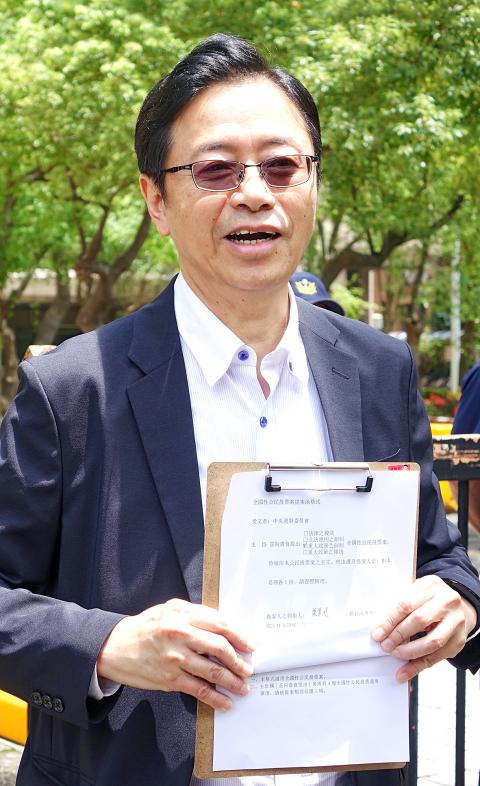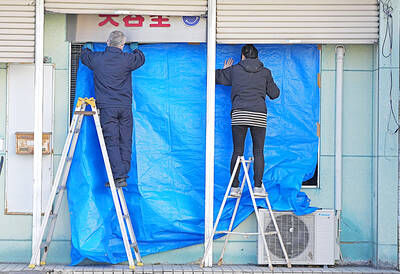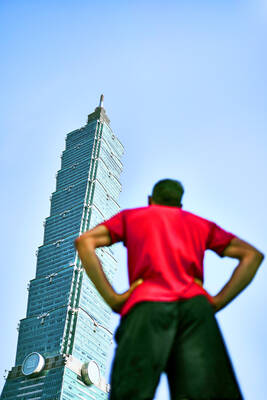Former premier Simon Chang (張善政) yesterday unveiled the “digital nation” referendum he is sponsoring and delivered 2,500 signatures to the Central Election Commission.
The proposed referendum hopes to establish an innovative digital committee or bureau, or similar agency, as part of the Executive Yuan to further develop the nation’s digital capabilities, said Chang, who last month announced his intention to run in next year’s presidential election as an independent candidate.
The government would, by law, have to establish laws and implement the agency should the referendum pass, Chang said, adding that should he win the presidential election, he would establish such an agency as his first executive order.

Photo: Liu Hsin-de, Taipei Times
The next challenge is to obtain the 300,000 signatures to make the referendum a reality, Chang said, adding that the primary problem — and also the most time and resource-consuming — would be how to collect the signatures.
Chang’s solution is to work with a taxi fleet and ride-hailing app — possibly Taiwan Taxi and Uber — to collect and organize the signatures.
The referendum’s primary purpose is to make Taiwan a digitally and technologically robust nation, Chang said.
He called the referendum the “Digital May Fourth Movement.”
The May Fourth Movement was a student-led movement calling for democratization, further scientific studies and discontent about the “Shandong Issue” under the nascent Republic of China government in 1919.
The “Shandong Issue” referred to the perceived inability of the government to protect China’s national interests such as the Treaty of Versailles handing Japan territories in Shandong, which had been surrendered by Germany after the Siege of Tsingtao in 1914.
Chinese academic and philosopher Hu Shih (胡適) had wished for wide-spread education in China a century ago, Chang said, adding that he hoped his “movement” would spur Taiwanese to have a deeper understanding of technology.
Chang said that he would be forming a nonpartisan Digital Legislators’ Association that would accept any candidate running for a legislative seat who recognizes that the government must implement structural changes to keep up with the digital age.

Taiwanese were praised for their composure after a video filmed by Taiwanese tourists capturing the moment a magnitude 7.5 earthquake struck Japan’s Aomori Prefecture went viral on social media. The video shows a hotel room shaking violently amid Monday’s quake, with objects falling to the ground. Two Taiwanese began filming with their mobile phones, while two others held the sides of a TV to prevent it from falling. When the shaking stopped, the pair calmly took down the TV and laid it flat on a tatami mat, the video shows. The video also captured the group talking about the safety of their companions bathing

US climber Alex Honnold is to attempt to scale Taipei 101 without a rope and harness in a live Netflix special on Jan. 24, the streaming platform announced on Wednesday. Accounting for the time difference, the two-hour broadcast of Honnold’s climb, called Skyscraper Live, is to air on Jan. 23 in the US, Netflix said in a statement. Honnold, 40, was the first person ever to free solo climb the 900m El Capitan rock formation in Yosemite National Park — a feat that was recorded and later made into the 2018 documentary film Free Solo. Netflix previewed Skyscraper Live in October, after videos

Starting on Jan. 1, YouBike riders must have insurance to use the service, and a six-month trial of NT$5 coupons under certain conditions would be implemented to balance bike shortages, a joint statement from transportation departments across Taipei, New Taipei City and Taoyuan announced yesterday. The rental bike system operator said that coupons would be offered to riders to rent bikes from full stations, for riders who take out an electric-assisted bike from a full station, and for riders who return a bike to an empty station. All riders with YouBike accounts are automatically eligible for the program, and each membership account

A classified Pentagon-produced, multiyear assessment — the Overmatch brief — highlighted unreported Chinese capabilities to destroy US military assets and identified US supply chain choke points, painting a disturbing picture of waning US military might, a New York Times editorial published on Monday said. US Secretary of Defense Pete Hegseth’s comments in November last year that “we lose every time” in Pentagon-conducted war games pitting the US against China further highlighted the uncertainty about the US’ capability to intervene in the event of a Chinese invasion of Taiwan. “It shows the Pentagon’s overreliance on expensive, vulnerable weapons as adversaries field cheap, technologically